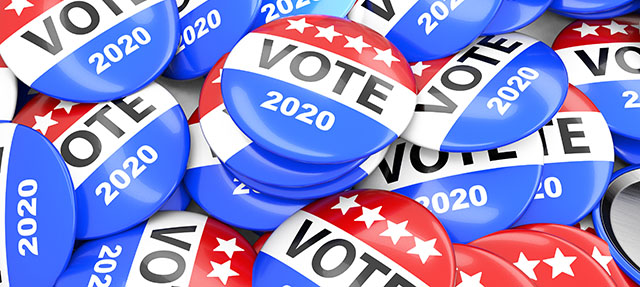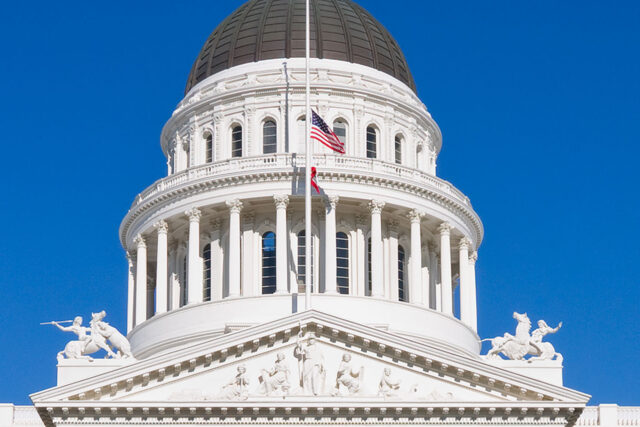With the release of California’s official Statement of the Vote all of the November election ballots have been counted. California voters made important decisions amid a pandemic and a recession in an election that will go down in history. These election choices stand out in this remarkable year:
- Voter turnout. A record-breaking 22,047,448 Californians—87.87% of the 25,090,517 eligible adults—were registered to vote before the general election, according to California’s Secretary of State. The 17,785,151 voters who cast ballots is an all-time high for California elections and, at 80.67% of registered voters and 70.88% of eligible adults, reflects participation rates rarely seen in the past 100 years. This follows the record high for ballots cast in the March state primary. Notably, Governor Newsom directed each county’s elections officials to send vote-by-mail ballots for the November election to all registered voters; 73% of California likely voters said they favored this response to the coronavirus outbreak in the May PPIC survey. Many factors increased political engagement, but the key element was the level of enthusiasm in voting for president—which crossed party lines—that we noted in the October PPIC survey. Still, over 10 million California adults either could not vote, did not register to vote, or did not submit their ballots.
- Top of the ticket. A big win for Democratic challenger Joe Biden over Republican incumbent Donald Trump was predicted in our October PPIC Survey and widely anticipated by both parties. Biden ended up with more supporters in California—an 11,110,250 vote total (63.5%)—than anyone who has ever run for president. Still, the 6,006,429 California votes for Trump (34.3%) outnumbered the total amassed in any of the 50 states—including Florida and Texas. The vote for Trump also exceeded the percent and number of Republicans registered to vote in California. Both the Republican and Democratic shares of the presidential vote grew from 2016, and minor party support shrank, while Trump’s vote grew by 1,522,619 votes. Trump had low approval ratings in California throughout his presidency, but his base remained loyal. The election map points to Trump majorities in the rural northern and inland areas, while exit polls indicate that Biden was heavily favored among African American, Asian American, and Latino voters.
- Down-ballot races. Democrats continued to dominate federal and state legislative races while Republicans made some notable gains. Out of the 53 US House seats, Democrats won 42 and Republicans won 11. Republicans now hold four seats that flipped in the “blue wave” 2018 mid-term election. In the 80 state assembly races, 60 Democrats, 19 Republicans, and one no party preference candidate were elected. The Republicans gained one assembly seat. In the 20 state senate races, 17 Democrats and 3 Republicans won seats. Democrats gained two state senate seats, including one that they had lost in a 2018 recall election, to maintain the two-thirds supermajority needed to control the legislative process.
- State propositions. California voters showed an independent streak and their policy preferences were somewhat at odds with state elected officials in their responses to state ballot measures. Voters rejected Proposition 15, a citizens’ initiative to raise commercial property taxes to fund schools and local governments that was endorsed by many of the state’s Democratic leaders. They also rejected Proposition 16, an initiative placed on the ballot by the state legislature that would have restored affirmative action programs in state government and other public institutions. But they passed Proposition 22, a citizens’ initiative that undid state employment legislation (AB5) and allows app-based transportation and delivery drivers to be contractors. They also passed Proposition 25, which was a referendum initiative that overturned a bail reform law recently passed by the legislature (SB10). Voters also approved Proposition 14, a state bond for stem cell research placed on the ballot as a citizen’s initiative, after rejecting Proposition 13 in March, a state bond for public schools and higher education facilities placed on the ballot by the state legislature.
As we close the books on the November election, the top issues on Californians’ minds in the October PPIC survey—the coronavirus outbreak, jobs and the economy, climate change and wildfires, housing affordability and homelessness, and the state budget—remain far from resolved. The December PPIC survey finds Californians in a gloomy mood about the future. The ability to reach consensus on policy solutions that offer a better future for Californians is the challenge of our times. How the state chooses to build on the high level of political engagement in 2020 will be important. The PPIC Statewide Survey will continue to provide a voice for Californians—including likely voters—as presidential leadership changes and the new Congress and California Legislature take up the people’s business in 2021.



